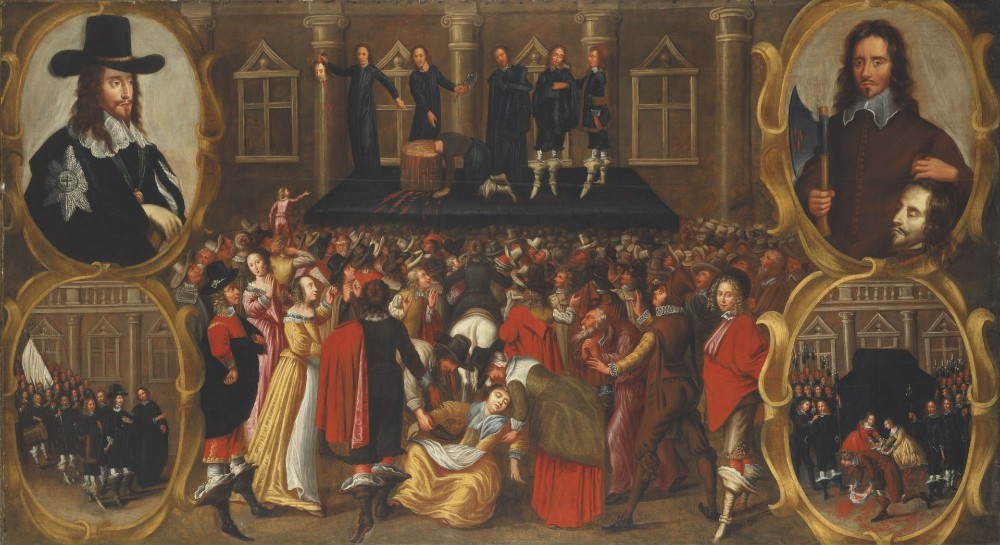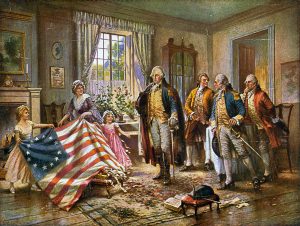History, Holidays & Observances on January 30
Holiday & Observances: Martyrdom of King Charles I of England
Major Events: Execution of Charles I, Hitler appointed Chancellor, Ghandi assassinated, Tet Offensive
Notable Events: Cromwell’s head on a spike, Eighty Years War, 47 Ronin, Attempted assassination of Andrew Jackson, Extermination of the Kulaks, MLK Jr. Bombing Incident
Born: Franklin D. Roosevelt, John Profumo
Died: Betsy Ross
Holidays and Observances on January 30
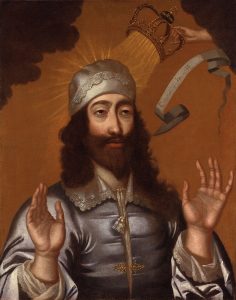 Martyrdom of Charles I (Anglican Church) – Across the pond, the Anglican Church observes today the death of King Charles I as a martyr. His martyrdom has more to do with politics than religion.
Martyrdom of Charles I (Anglican Church) – Across the pond, the Anglican Church observes today the death of King Charles I as a martyr. His martyrdom has more to do with politics than religion.
The death of Charles I came on this day in 1649, at the end of the first phase of the English Civil War. Convicted by Parliament of treason, he was led to the scaffold and beheaded. It was an act still reverberating in the colonies over a century later, as the Revolution approached.
The religious issues raised during the English Civil War were extensive, but they were not the defining issues or causes of the war. The defining issue had been the power of a King to rule tyrannically set against the power of the Parliament to legislate and tax. That said, in addition to religious issues surrounding the dispute, the Civil War itself pitted the Royalists, largely Anglican and supported by the Anglican Church, against an army raised by Parliament, which army was largely composed of Puritans and of other protestant sects that “dissented” from the Anglican Church.
When Charles I’s head fell from his shoulders this day in 1649, the ascendancy of the Anglican Church fell with him. For the next near dozen years, England would be ruled by Puritans. But after the restoration of the monarchy and the enthronement of Charles II in 1661, he reestablished the Anglican Church to its perch. The Church hierarchy was keen on punishing the Puritans and painting Charles I as a good monarch who had been criminally wronged by the Puritans. They argued that Britain’s Kings ruled by divine right. Thus they proclaimed Charles I a saint and martyr to be venerated annually while painting dissenters as inveterate traitors to the English nation who were and are guilty of a mortal sin.
That posed a problem in the American colonies, where, by 1760, well over 50% of the population belonged to the English or Scottish Dissenting religions and where only 15% of the population was Anglican. The typical American did not look upon Charles I as a martyr, nor themselves as guilty of his murder, nor the King as ruling by divine right, nor the Anglican Church as morally superior – quite the opposite on all counts. And these self-same colonists were quite touchy about the British government acting tyrannically.
In Boston of 1750, the Congregationalist (Puritan by another name) minister Rev. Jonathan Mayhew gave a sermon, A Discourse concerning Unlimited Submission and Non-Resistance to the Higher Powers: With some Reflections on the Resistance made to King Charles I. And on the Anniversary of his Death: In which the Mysterious Doctrine of that Prince’s Saintship and Martyrdom is Unriddled that has since been called “The Morning Gun of the American Revolution.” In it, Mayhew justified the Puritans of old in rebelling against King Charles I for his tyrannical acts. Mayhew would later be one of several Congregationalist ministers – the “black robe regiment” – who was blamed for leading the colonies into rebellion against King George III.
Major Events on 30 January
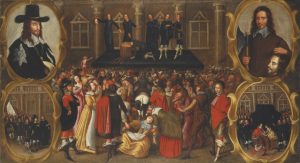 1649 – Parliament has King Charles I Executed
1649 – Parliament has King Charles I Executed
The Rump Parliament – i.e., those members of Parliament remaining after Col. Pride’s purge of all the members who were not favorable to the military – held a short trial of King Charles I. The conclusion was foregone. On the 27th of January, 1649, Parliament found the King guilty of treason and other crimes. On this date, they had Charles I executed.
This was an inflection point in British and American history beyond simply the religious aspects discussed in the section above. Within Britain, where Anglicanism and the monarchy still held sway after 1660, the beheading of Charles I established the primacy of Parliament within politics and established Parliament as a bulwark to protect individual rights against the King.
Within the colonies, the lessons learned were from the perspective of the Dissenters. It ensconced the belief in inviolable individual rights of Englishmen that were beyond the reach of British government. Indeed, when Americans began to speak about liberty and the rights of Englishmen after 1760, they were not engaging in new theories. The language they were speaking was the language spoken by Puritans and Presbyterians a century earlier, during the time of the English Civil War.
1933 – Adolf Hitler is sworn in as Chancellor of Germany.
In 1918, during the German Revolution, monarchists tried to restore the German Empire while communist Germans attempted a Bolshevik coup. The Bolsheviks succeeded in seizing power in Bavaria, but in the ende, neither monarchist nor communist succeeded and Germany adopted the Weimar Republic, but it was a fragmented polity in the post-war years. After dealing with hyperinflation of 1922-23, the Republic partially stabilized until the 1929 world-wide Depression. By 1930, the Republic was deadlocked in the Reichstag and the President, Hindenberg, authorized the Chancellor to act by fiat, without the necessity of legislation from the Reichstag. The Chancellor followed a very unpopular policy of austerity.
The Nazi Party was a minor party in Germany prior to the Depression, never garnering more than 6% of the vote. After the Depression, Hitler became more popular. In the 1930, election, his Nazi Party won 18% of the vote and, in the two elections in 1932, the Nazi’s became the largest party in the Reichstag with a third of the vote. The German communist party was not far behind.
Hitler did not have enough power to form a majority government, and no one had been able to form a coalition government.
The absence of an effective government prompted two influential politicians, Franz von Papen and Alfred Hugenberg, along with several other industrialists and businessmen, to write a letter to Hindenburg. The signers urged Hindenburg to appoint Hitler as leader of a government “independent from parliamentary parties”, which could turn into a movement that would “enrapture millions of people.
Hindenburg reluctantly agreed, and on this date in 1933, reluctantly swore in Hitler as the Chancellor of Germany. Within a month, the Reichstag was set on fire, probably by communists, and Hitler used the fire to manipulate a grant of dictatorial powers over Germany. He would never relinquish that power.
1948 – Mahatma Gandhi is assassinated
Mahatma Gandhi was a Hindu and a lawyer trained in London. In 1915, he returned to India, then a country being ruled by Britain as part of the British Empire.
He set about organising peasants, farmers, and urban labourers to protest against excessive land-tax and discrimination. Assuming leadership of the Indian National Congress in 1921, Gandhi led nationwide campaigns for easing poverty, expanding women’s rights, building religious and ethnic amity, ending untouchability, and above all for achieving . . . self-rule.
There were two dominant religions in India, the native Hindu religion and Islam that had been imposed on about half of the Indian subcontinent by various conquerors over the past half millennium. Over the centuries, the Muslims had slaughtered millions of Hindus. By the 20th century, there was a tremendous amount of religious enmity between the Hindus and the Muslims.
Ghandi preached against that tide, arguing not merely for Indian self rule, but for religious tolerance by both Hindus and Muslims. That did not sit well with Hindu radicals. The issue became acute after WW II, when Britain relinquished its rule over India and religious animosity between Hindus and Muslims exploded:
In early September 1947, Gandhi had moved to Delhi to help stem the violent rioting there and in the neighboring province of East Punjab. The rioting had come in the wake of the partition of the British Indian empire, which had accompanied the creation of the new independent dominions of India and Pakistan, and involved large, chaotic transfers of population between them.
Nathuram Vinayak Godse, and his assassination accomplices, were residents of the Deccan region. Godse had previously led a civil disobedience movement against Osman Ali Khan, the Muslim ruler of the princely Deccan region dominion of Hyderabad State in British India. Godse joined a protest march in 1938 in Hyderabad, where Hindus were being discriminated against, according to Fetherling. He was arrested for political crimes and served a prison sentence. Once he was out of prison, Godse continued his civil disobedience and worked as a journalist reporting the sufferings of Hindu refugees escaping from Pakistan, and during the various religious riots that erupted in the 1940s.
According to Arvind Sharma, the concrete plans to assassinate Gandhi were initiated by Godse and his accomplices in 1948, after India and Pakistan had already started a war over Kashmir. The government of India, led by Congress leaders, had withheld a payment to Pakistan in January 1948 because it did not want to finance Pakistan, which was at war with India at that time. Gandhi opposed the decision to freeze the payment, and went on a fast-unto-death on 13 January 1948 to pressure the Indian government to release the payment to Pakistan. The Indian government, yielding to Gandhi, reversed its decision. Godse and his colleagues interpreted this sequence of events to be a case of Mahatma Gandhi controlling power and hurting India
On this day in 1948, Godse approached Ghandi as Ghandi left a Hindu Temple and fired three rounds, killing Ghandi. Ironically, the murder of Ghandi also marked the death knell of radical Hindu nationalism:
Gandhi’s assassination dramatically changed the political landscape. Nehru became his political heir. According to Markovits, while Gandhi was alive, Pakistan’s declaration that it was a “Muslim state” had led Indian groups to demand that India be declared a “Hindu state”. Nehru used Gandhi’s martyrdom as a political weapon to silence all advocates of Hindu nationalism as well as his political challengers. He linked Gandhi’s assassination to the politics of hatred and ill-will
1968 – North Vietnam activates the Viet Cong and launches the Tet Offensive
During the Vietnam War, the Tet offensive was a coordinated attack throughout Vietnam beginning on this day by all of the communist guerrilla infrastructure in Vietnam and with additional soldiers from the North Vietnamese Army, in total about 80,000 men. The North Vietnamese government believed that it would trigger a popular uprising among the people of South Vietnam.
The offensive targeted “72 of 245 district towns, and the southern capital.” By the time the fighting was done, the Vietcong were left combat ineffective. Over half of all the communist soldiers, regular and guerrila, that took part in the offensive were killed and an unknown number were wounded. Militarily, it was a disaster. As a trigger for a popular uprising, it was an utter failure.
Where it succeeded was in the homes of Americans who turned in to listen to the man who was then the most trusted man in America, Walter Cronkite.
Cronkite’s editorial convinced President Lyndon Johnson not to seek a second term. Moreover, coupled with the Marxist revolution then taking hold on college campuses, it spelled the end of American involvement in the Vietnam War.
Notable Events on January 30
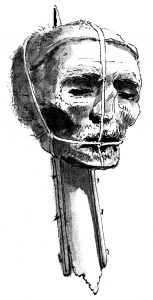 1661 – After the Restoration of the Monarchy, Parliament had the corpse of Oliver Cromwell, Lord Protector of the Commonwealth of England, dug up from the grave where he had been interred upon his death two years prior. Parliament had Cromwell ritually executed and his head placed on a spike outside of Westminster Hall where it remained until 1685.
1661 – After the Restoration of the Monarchy, Parliament had the corpse of Oliver Cromwell, Lord Protector of the Commonwealth of England, dug up from the grave where he had been interred upon his death two years prior. Parliament had Cromwell ritually executed and his head placed on a spike outside of Westminster Hall where it remained until 1685.
1648 – The Netherlands were a pawn in 16th and 17th century European politics. Spain, in 1555, inherited control of the Netherlands in the breakup of the Holy Roman Empire and tried to suppress Protestantism, leading to the Eighty Years’ War as the Dutch revolted. On this day in 1648, the two sides agreed to peace with the Treaty of Münster and Osnabruck, though it still left the Spanish in control of several of the lowland provinces of the Netherlands. The complex peace treaty also ended the Thirty Years War in Germany.
1703 – The Forty-seven rōnin, under the command of Ōishi Kuranosuke, avenge the death of their master, by killing Kira Yoshinaka. It is one of the most well known stories glorifying the Bushido code to come out of 18th century Japan.
1835 – Richard Lawrence attempted on this date to assassinate President Andrew Jackson, but failed and was subdued by a crowd, including several congressmen as well as Jackson himself. He was determined in court to be insane and spent the remainder of his life institutionalized.
1889 – Archduke Crown Prince Rudolf of Austria, heir to the Austro-Hungarian crown, is found dead with his 17 year old mistress, Mary Vetsera, at a hunting lodge in the Mayerling. Both had committed suicide. The ailing Hapsburg Empire would survive the scandal but would voluntarily cease to exist under pressure from President Woodrow Wilson after WWI.
1930 – The Politburo of the Soviet Union orders the extermination of the Kulaks. The problem for the Politburo members was that, once the Kulaks were eradicated, there were no more external enemies of the state to be scapegoats. New ones within the Soviet hierarchy itself had to be found. Life in a atheist police state where government reigns supreme proved itself particularly deadly in the 20th century, mostly to its own people.
1956 – African-American civil rights leader Martin Luther King, Jr.’s home was bombed this day in retaliation for the Montgomery Bus Boycott. The incidents raised MLK to a national figure in the civil rights movement.
Born on January 30
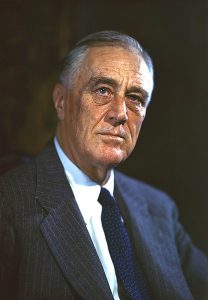 1882 – Franklin D. Roosevelt, the President whose economic policies would extend the period of the Depression, the President who blatantly manipulated the Supreme Court with the threat of court packing, and the man who sowed all of the seeds for LBJ to make extra-constitutional rule by the regulatory bureaucracy the norm in the United States. His malevolent influence is still felt in American politics through today.
1882 – Franklin D. Roosevelt, the President whose economic policies would extend the period of the Depression, the President who blatantly manipulated the Supreme Court with the threat of court packing, and the man who sowed all of the seeds for LBJ to make extra-constitutional rule by the regulatory bureaucracy the norm in the United States. His malevolent influence is still felt in American politics through today.
1915 – John Profumo, a man who rose to be Britain’s Secretary of State for War in 1961 and whose fall from grace because of a sex scandal with a 19 year old model brought down the Tory government.
 Died on January 30
Died on January 30
1836 – Betsy Ross, a woman who provided several services of note to the nascent United States. It is claimed – though disputed – that she designed and sewed the first American Flag at the request of George Washington in 1776. It is also quite possible that “Ross was the ‘beautiful young widow’ who distracted” the commander of Hessian forces, “Carl von Donop in Mount Holly, New Jersey, after the Battle of Iron Works Hill, thus keeping his forces out of the crucial ‘turning-of-the-tide’ Battle of Trenton’ on the morning of December 26, 1776, in which Hessian soldiers were defeated” by George Washington.
